If you’re a startup founder, then I know how you feel:
You want to grow your company…fast!
I’m the founder of several successful startups myself.
So I’ve been there. And I know it seems tough.
You want exposure, but you can’t afford to hire a public relations (PR) firm.
But I promise:
Learning how to pitch like a pro to get the attention your startup deserves isn’t as hard as you think.
I’m about to teach you how to do exactly that with the 40 simple strategies I’ve outlined below.
And once you’ve read them, you’ll have all the tools you need to be a PR pro.
But, first things first:
What will it take to write an effective media pitch that will get the attention of journalists, bloggers, and influencers?
At JustReachOut we have over 4,000 clients, who are entrepreneurs just like you.
And they all ask me over and over:
How do I pitch myself to the press and to influencers?
Let’s dig a little deeper so I can show you the simple answer to this question.
Here are the key components to writing the perfect pitch to journalists:
- The body of the email is short but personalized
- The subject line is also short and simple, yet it has the ability to intrigue the reporter enough to open the email
- It addresses the reporter by name
- It’s sent to the relevant journalist or influencer who writes about your niche
- The email gets to the point quickly
- If you’ve already established a relationship, and you’re ready to pitch a story, then you clearly explain why an article about your company/product/service would be beneficial to the publication
- It holds an emotional hook for reporters, so they want more information to encourage a response
- It doesn’t use buzzwords
Not so tough right?
Here’s an idea for an email that will likely get a journalist’s attention, so you can start to build the foundation for a relationship with that journalist, and eventually pitch yourself, or a story idea, to them:
SUBJECT: Typo in your article
Hey Steven,
I respect your reporting a great deal, love the stories you put out. Crazy to think that there are more people using mobile vs. desktop now. Saw that you have a few spelling mistakes in your recent article, wanted to follow up:
“The project, which was was announced” [Write the sentence with the mistake.]
“The content will be uses for The New York Times” [Write the sentence with the mistake.]
Looking forward to your next stories. Which article are you working on next?
Thanks,
Name
That’s easy to replicate, right?
But wait, here’s another example:
SUBJECT: Re: Loved your article about [insert the topic which they wrote about]
Hey Steven,
I’ve been following your blog for the past 3 years, so many great insights!
Your recent post about [insert the topic which they wrote about] really resonated with me. I followed it step by step, and I found it dramatically reduced my day-to-day stress.
You can read my post about it here: [insert URL of your own post]
If you’re so inclined, I’d love for you to share it with your audience.
Thanks for publishing your unique tips with the community!
Thanks,
Name
If you can write an email like this and get yourself mentioned in the press, then you can:
- Make a huge impression on your prospects and customers.
- Enhance your brand’s trust and reputation.
- Increase your organic search ranking and site authority, which in turn brings more qualified leads and customers.
Awesome, right?
Hold on, though, because it’s important to realize:
The relationship between your startup and influencers is symbiotic.
While you, as the startup, want exposure in top publications, the media outlets also want to hear from you because ultimately …
They need story ideas!
And they’re always looking for fresh sources.
I’m excited to share the 40 best ways to pitch via email that I compiled with help from the folks at LeadFuze.
Master these techniques, and I’m sure:
You’ll get the attention your startup needs!
Ready? Lets roll…
Here are 40 PR email pitch tips to help your startup get noticed:
Start with Research
1. Spot Your Sources
If your company sells beauty products, would you send an email pitch to a hunting magazine?
I know, that’s a silly question. But it’s important to know:
Sending your email to a relevant niche matters.
Where can you find relevant journalists and influencers? It’s simple…
Follow industry-related publications.
You can search Google News to find these sites, or create daily news alerts.
Let’s go back to the beauty-product scenario.
For this example:
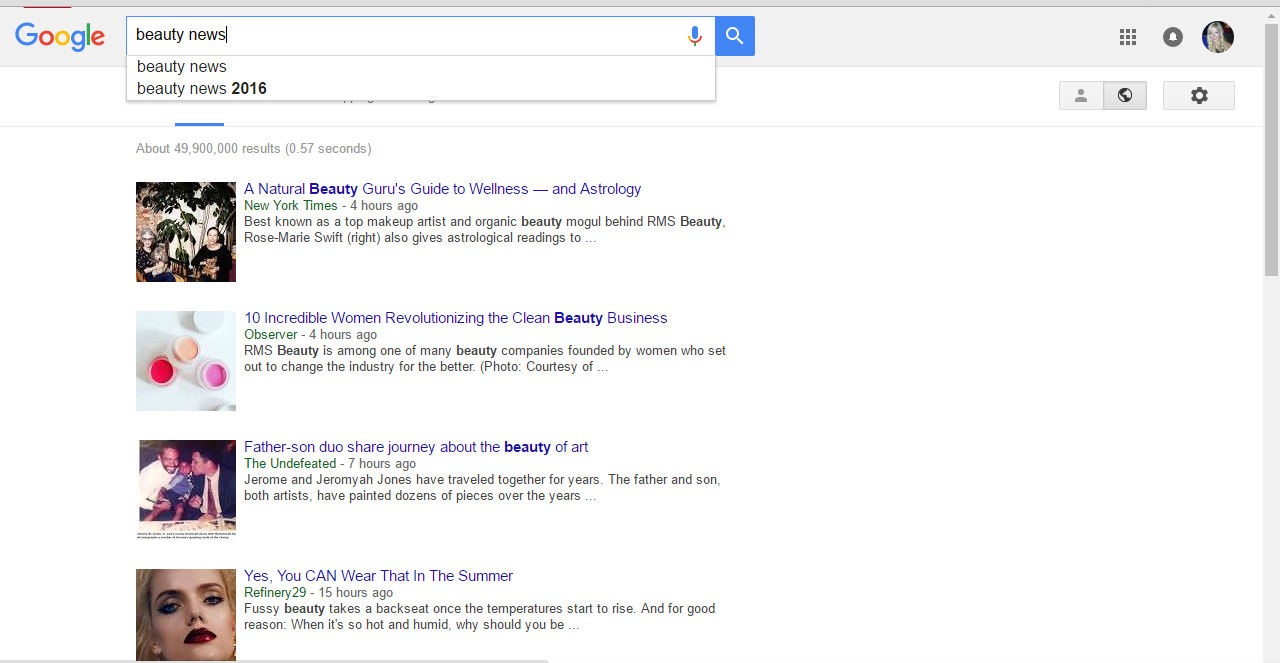
It only takes a little effort to find top publications about your niche.
If you read daily news about your niche, you’ll also notice the same writers who cover topics related to your industry.
Once you read a lot of articles written by the same people, you’ll learn their style and their favorite topics.
And now that you’ve been reading their writing, you can use that information when you pitch your idea.
Another great way to get noticed?
Become a source yourself!
Not only will you be getting your foot in the door as a fellow writer, but you’re providing something of value to the reporter.
Mutually beneficial relationships like these tend to continue to grow.
It gets better:
You can also use online tools and forums.
Finding industry-related writers can be like finding a needle in a haystack.
But if you use tools and forums like JustReachOut, you’re halfway there!
You can also search Quora and Reddit for relevant conversations.
You can get involved in discussions, but don’t (I repeat DON’T) mention your products or services right away. Doing this will instantly demote you to troll status!
At first, share your opinions and provide worthwhile feedback.
Then, set your sights on building a relationship with the journalists you’ve been reading.
You can see a great example of this here.
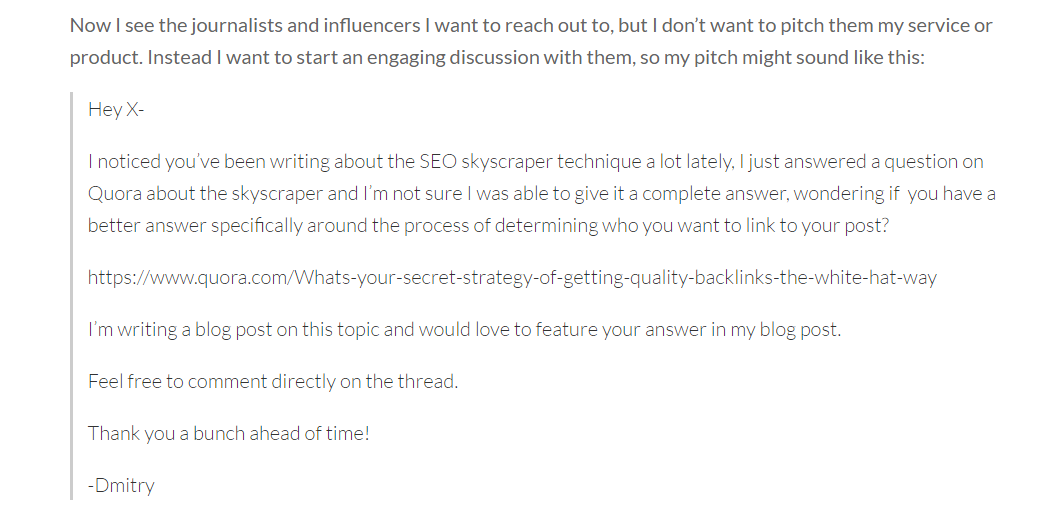
2. Do Your Research

The easiest way to turn off a journalist is to contact them without prior research or knowledge about their audience, what they write about, and what’s important to them.
In addition to creating Google Alerts, you should hone in on specific journalists that you feel have an audience that matches your story and your company.
Even if the writers also cover stories outside your industry, get familiar with those writers, and gain as much knowledge as you can about their readers.
The easiest way to accomplish this is to prove you’ve done your research in an email to them.
Generic mass emails never work; personalization is essential to show you’ve done your research. But I don’t like to waste time sending these personalized emails one-by-one.
I’ve used Mailshake for 4+ years now to: 1) personalize hundreds of emails all at once, 2) schedule those emails to send on your schedule, and 3) automate follow-ups if they don’t reply.
Here’s a great example:
Hey X,
I found your recent article, <three word description of article>. It was very educational, and I specifically thought XYZ was fascinating.
If you are looking for sources for any upcoming stories on XYZ, I would love to offer my expertise.
The reason this pitch works so well is that it’s highly personalized email, you are emailing someone and telling them you read their article, you liked it and you have something to say. This is exactly how you would start a conversation with someone you don’t know.
3. Twitter Hashtags
Just as Google Alerts will help you follow news stories, hashtags will help you monitor those topics in social media.
You’ll be able to see the latest news and how others are reacting to it.
Following these interactions can help you shape your email pitch to capture their interest.
4. Build A Presence

Just like sales, cold emails can become warm emails by building a social presence.
In today’s world of journalism, even print writers have their stories shared socially through Facebook, Twitter, etc.
This is your chance to begin following them and build a relationship. Offer quality comments on their articles, so you’ll become a recognizable name.
And then suddenly …
You’ll be much more welcome when you hit up their inboxes.
5. Be A Connector
While building your business, you likely have come across excellent sources, both personally and professionally.
Putting reporters in contact with a source you know is a great way to network and establish respect.
6. Join HARO
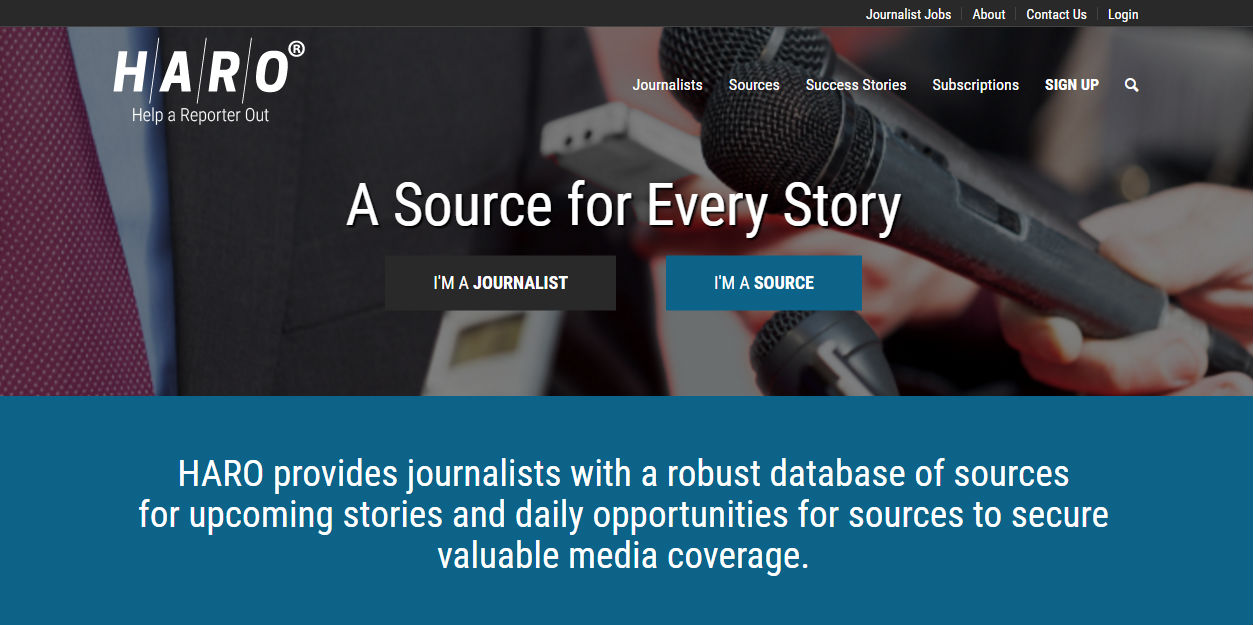
Sign up for HARO, and you’ll receive emails twice a day full of requests from journalists seeking sources for articles. Topics are wide ranging and include tech, business, health, entertainment, beauty, science, and finance.
HARO is awesome, because:
- You can establish yourself as an industry expert
- You can earn a backlink to your website
JustReachOut has an automation tool so you can quickly search for active HARO queries related to your company and the work you do.
7. Join YEC
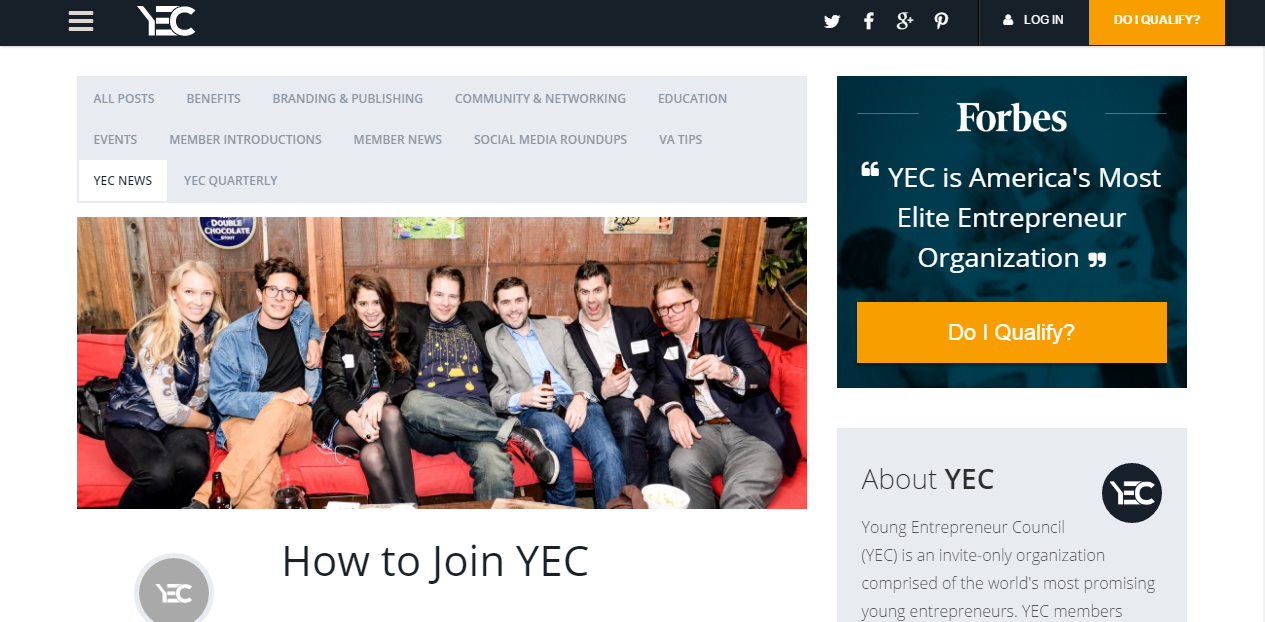
If you have at least $1M in financing or $1M in annual revenue, and you’re 40 years old or younger, you can join YEC (Young Entrepreneur Council).
This will get you great press.
Time To Write
8. The Subject Line
Think of your subject line as a first impression.
We’ve all heard:
You don’t get a second chance to make a first impression.
Well, when it comes to email, the cliches are true.
So how do you make a great first impression?
- Keep subject lines 6 to 10 words.
- Be specific — catch the writer’s interest — why do they need to read your email pitch?
- Get to the point and illicit curiosity
- Sound like a person, not a robot
- Avoid spam filter trigger words, like “free,” “you” or excessive use of punctuation)
Example from Hashtagsandstilettos.com –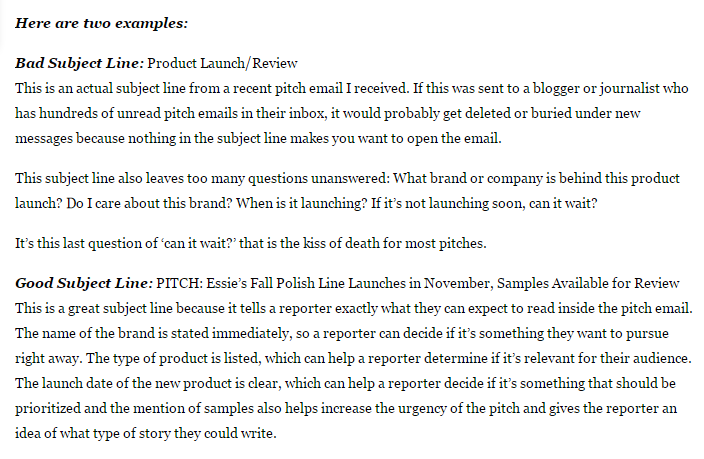
9. Ditch the Intro
Don’t waste time explaining yourself or your company.
Jump straight into why your story is relevant to the writer and the writer’s audience.
Remember the five w’s journalists live by:
Who, What, When, Where, and Why.
10. Short and Sweet
Consider many journalists get 100 email pitches a day.
I’m not saying this to discourage you, but remember:
Suggested length for emails can vary.
Basic guidelines include anything from 20 to 100 words and somewhere between two and three paragraphs.
If you want to make your email even easier to scan, use bullet points.
11. In Your Own Words
Everyone loves a good story.
Competition, drama, gossip, failures, and unlikely successes make great headlines.
Why?
Because they appeal to our emotions.
When you can show a human side to your startup, you’re naturally more likable.
You can get results by asking a journalist to tell your story for you, but consider that you may have more luck telling your story in your own words.
There’s a lot of power in being the voice behind your brand. That’s why guest posts are a fantastic way to start a buzz.
PR of years past required finding a reporter to print your story on paper (yes, paper). Now, even the top publications have websites and encourage contributions from guest writers.
Not convinced?
Take a look at the first paragraph of this contributing writer’s article in Forbes, and tell me you’re not instantly hooked!

Are you as intrigued as I was?
You can read the rest of the post at Forbes.
This story is proof there’s power in telling your own story. Why?
Because Sunday’s success story is genuine and relatable.
12. Video for Visuals
Visually stimulating content beats the written word in today’s marketplace.
Why does that matter to you?
You can produce a funny, educational or compelling video to include in your next email pitch.
Publish your video yourself on YouTube, Vimeo, Facebok Live or other sites for powerful PR.
13. Poweful Pictures
I also recommend photos and graphics to build visual interest.
But avoid boring, cookie cutter pics.
Use images that are compelling and relevant.
14. Personal & Professional
Take time to make sure you know the reporter’s name and other background info and spell it correctly in the email.
A custom pitch will keep things personal and increase your odds of getting heard.
15. Close with P.S.
Use a post script to make sure you’re reaching out to the right person.
For example:
“P.S. If you aren’t the right person to contact for this story, would you be able to let me know who is?”
Attaching a post script with that question makes the request less distracting and more subtle.
16. Signature = Success

You want reporters to reply, right?
Don’t make it hard for them to find your contact info.
Email signatures make you look professional, and provide contact details for an easy response.
A good friend of ours George El-Hage who is a CEO of Wave Connect, a company focused on providing digital business cards has mentioned many times that one of the most underutilized ways to market yourself is to simply improve your signature at the end of all your emails.
17. Ask A Question
Finish your email with a question to naturally invite a response.
People love to give advice and share their opinions, so leverage this tendency to raise interest.
Examples:
Are there any stories you are working on now that need sources?
How far in advance is your editorial schedule laid out?
The Pitch Itself
18. Share Newsworthy Info

It would be great if you could automatically pitch your product or service to a journalist and have them broadcast it to the masses without any effort.
But, I hate to break it to you:
That will never happen.
If you don’t have something newsworthy to share, forget it.
That’s why you need community events or other newsworthy strategies to be the reason behind your email.
The act of starting a new company or service isn’t enough. So how do you create something worth mentioning?
Check out these 11 soundbites from MrMediaTraining.
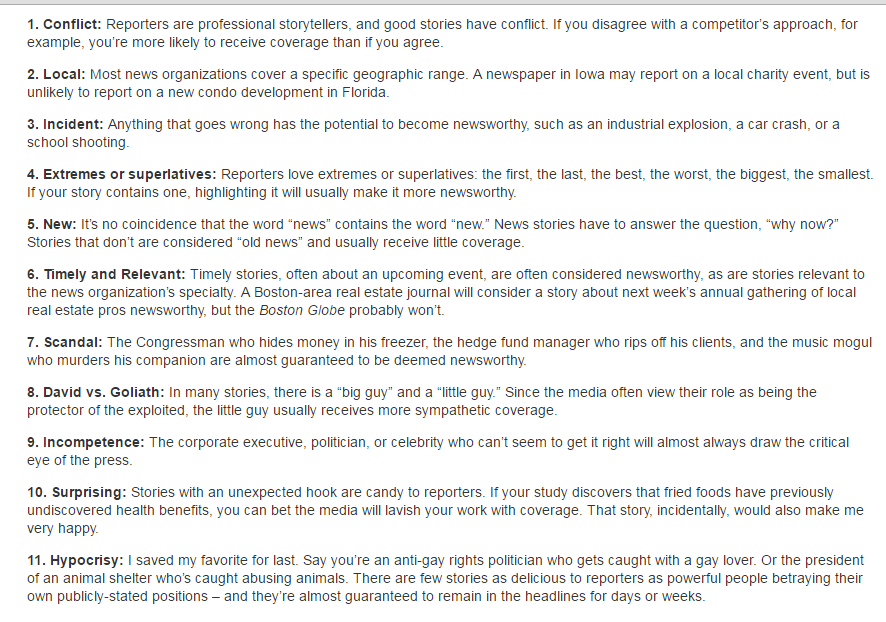
19. Show Value
Just as you discuss value proposition in sales, you must do the same in PR.
It’s not about what the reporter can do for you, but what you can do for the reporter!
Every good writer wants a great scoop, something that will make their readers happy by educating, entertaining, or provoking thought.
Include this high up in the body of your email so the main hook is front and center.
20. Have Empathy
Put yourself in the shoes of the person reading your email.
What would grab their attention and make them open it?
21. Write How You Talk

Have you ever been talking to a close friend or significant other and accidentally slipped into business jargon mid-argument?
Yeah … it doesn’t go over well.
People like to be spoken to like people. Don’t make your writing sound like a robot.
Write how you speak. Those who struggle the most with writing often forget this key tip.
22. Problem Solve

No one wants to hear a sales pitch when they’re not looking to buy something.
Pitch your story as a way to solve a common problem or…
Simplify difficult situations that you know their readers experience.
But leave the sales pitch at home.
Maximum Impact
23. Be Timely, Always
Pitching the right story at the right time can be tough.
But put in the work and you’ll see results:
Keep your emails current, timely and appropriate.
24. No Mass Emails
In a nutshell:
Mass emails make you look lazy.
They show you don’t want to take the time to compose a personalized letter.
25. Host an Event
Events are worth writing about!
Create your own event, and then promote, promote, promote!
26. Give Advance Notice
Journalists often have stories planned out several weeks in advance.
And sometimes …
Editorial calendars are booked up to six months, or even a year, in advance.
Give reporters time to fit your event into their schedule.
If you’re emailing them about an event happening this weekend, it’ll likely be too last-minute.
27. Avoid Simple Mistakes
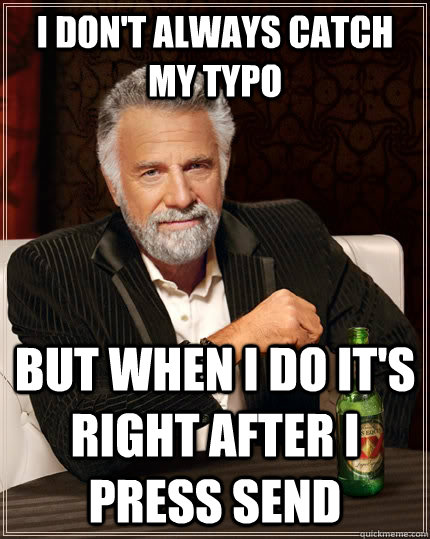
As a writer myself, I can tell you that no one’s immune to the occasional typo or grammatical error.
But when you’re writing to writers, it’s vital to be meticulous …
One typo and you can lose all credibility.
Avoid simple mistakes in that first outreach more than any other.
I can’t tell you how many times a day I re-read something prior to publishing it!
If editing isn’t something you’re comfortable with, get a second set of eyes to sign off before you hit send.
28. Don’t Call

One of the most common requests from reporters across the board is: Don’t call me!
Reporters are busy, busy, busy.
Interrupting them with phone calls is a quick way to get yourself blacklisted.
Allow reporters to get back to you on their own time via email.
After Sending
29. Be Patient
Allow some time for a follow-up.
It’s a necessary part of the PR email pitch process, but…
There’s a fine line between being persistent and being annoying.
Give the reporter time to read and respond before filling up their inbox with a second or third message.
Allow at least 3 to 4 business days to pass before following up.
30. Reach out Again
Don’t give up. If that follow-up email didn’t get a response, wait 4 to 5 business days and reach out again.
Some journalists get thousands of emails every day!
So even if they were interested in your email pitch, it might have slipped their mind.
Get back on their radar by following up.
I also advise you to install an email tracking tool like Mixmax. Then, you’ll know if the journalist has opened your email, or clicked on any of its links.
If they opened it more than once, it’s a sign they may be interested.
If they aren’t interested, most will tell you after your third outreach.
Then, move on and focus your attention elsewhere.
31. Be Consistent
Too often we have the tendency to suffer burnout.
Make a goal to reach out to X number of people a day, no matter what.
So, if friends ask if you’re free tonight?
Answer:
Only if you’ve emailed X number of people first!
Once you stick to this schedule for a week, it’ll start to become a habit.
It also helps to reward yourself for reaching your daily goals in the beginning to keep yourself on track. Make it something simple that brings you a burst of endorphins like a chocolate croissant.
32. Test Your Message
If you’re using the same general format for all your outreach and getting poor responses, change things up!
Test something new by reworking your subject line, the main points of your pitch, and how you phrase your requests.
Other Mediums
33. Use LinkedIn InMail
There’s a time and a place for traditional emails, but if you’ve connected with someone on LinkedIn, continue reaching out with InMail.
You might confuse your connection if you change your platform from InMail to an inbox.
34. Don’t Underestimate Snail Mail

Back in those golden days before we all had computers at our fingertips, we actually used a pen, paper, and stamp to express our thoughts.
As email gurus, we can easily discount direct marketing campaigns like snail mail.
But when it comes to PR, it might not be a bad idea to send a stamped envelope with your email pitch.
Even More Strategies
35. Don’t Underestimate the Power of Complimenting a Reporter

Everyone loves a good compliment.
Journalists are constantly covering controversial subjects and can be bombarded with hate mail.
Get a journalist to notice you by complimenting their recent works. And if you do it the right way…
A specific compliment proves you’ve read their writing.
36. Use Permission-Based PR in Addition to Cold Emails
Try this approach:
“Traditionally, when we wanted to get media for our clients, we’d just send a pitch email, including the media release. While this worked for some, it wasn’t foolproof for most startups. Now, we identify a month early what journalists we’re targeting and send a simple intro email; introducing ourselves and asking their permission to send them a pitch(s) in the future. We also ask what style they prefer, how much notice they like, etc. Not only does this work — we’ve noticed a large increase in coverage rates as a result.”
— Heather Carson, President and Co-Founder of Onboardly Media
37. Promote Philanthropy
Aligning yourself and your company with a great cause not only feels good, but it makes you newsworthy as well.
Check out local philanthropic events taking place in your area and see how you can get involved.
Once you are involved, you have great newsworthy updates to pass to your targeted writers.
38. Don’t Forget Targeted Keywords When Actually Writing Content
The point of this email pitch is to get people to write about you, but that doesn’t mean you should underestimate the importance of optimizing your own content.
If your email resonates with a journalist, the first thing they are going to do is research you to see if you’re legit.
Building your online presence by using relevant and optimized keywords will make it easier for them to find you.
39. Publish Your Own Amazing Content
While we’re on the subject of content, create your own!
The better your content is, the more it’ll be shared and…
The more likely your name will get out there.
Yes, stories published in respected news outlets are your goal, but use the resources you’ve got to enhance the chance your story will get picked up.
40. Focus on PR Quality, Not Quantity
Don’t get too “send happy” with your emails.
Yes, you want coverage, but take the time to make sure you’re targeting quality sources. Quality wins over quantity any day.
Aim high, it may take longer to get the attention of those larger publications, but…
It’ll be so worth it in the end!
Over to You
Learning to perfect the art of the PR email pitch is ongoing.
As you can see, it takes some serious time.
But, if you keep in mind your target audience and how you would like to be approached as a reporter, then you’re well on your way!
What are your go-to tips for pitching your story?
You might also want to check out our newest blog posts:
Definitely a good professional signature is a must. And also, joining several groups and organization to meet people and expand network. Great post Dmitry!
Definitely agree with you there, I’ve got quite a good collection of email endings I love to use, check these out, would love your feedback on your favorite ones: http://www.criminallyprolific.com/email-endings/
Will check that out! Thanks for the reference Dmitry! 🙂
Some very neat ideas. I can see applying some in my guest post outreach too!!
Dimitry, I was wondering if bloggers should reach out to reporters when they come out with an epic piece of content or is pr just for startups and companies to get news out about the latest feature or event ?
Would love to hear your thoughts on that!
Hey Shaurya,
Watch this video https://prthatconverts.com/ see the video on the page? Fast fwd to 17 min to skip the back story. See the four ways I advise doing PR? Try following one of these tactics instead. Sound good?
-Dmitry
Sorry dimitry, but I still don’t get if a blogger should be doing pr outreach for his blog after coming out with a good piece or not?
Like I do get that I can interview someone or do a roundups and it is going to help me make relationships but how will I get mentioned on publication sites as a result of it?
Hey Shaurya,
So the answer is yes, you of course want to promote your blog post but you want to do it in non-spammy way. You don’t want to be doing what everyone else is doing.
The four tactics in the video I shared are designed to help you open up a conversation with the influencer or journalist, you’ll need to develop the relationship and show them a lot of value before they would end up promoting you. Here, watch the second video: https://prthatconverts.com/vid2-build-relationships/
In terms of a backlink strategy, read this article:
https://www.semrush.com/blog/using-guest-blogging-as-a-link-building-strategy/
Does this help?
-Dmitry
Thank you for the tips! I am wondering if to do this manually from my inbox or could I also use nice templates and reports for the email service provider I’m using (in my case Mailerlite ESP)? I mean – then it would be possible to see whether the email was opened, right? (I’m not thinking to do it mass email!) I’m just wondering whether that way I’d see the open rate even if the reporters don’t follow through and reply.. And then adjust the subject line if needed or know that I should follow-through or not.. I’d appreciate your comment!
Hey Tomas, thanks for the question. I use MixMax to see if someone opened my email, works like a charm! Hope this helps!
Hi, we use remail.io for response tracking, I wish it had some free plans for starting users with small campaigns.
re: SUBJECT: Typo in your article
Good tips, but as a journalist with almost 40 years’ experience, I would NEVER mention any spelling mistakes or errors to a media contact or journalist I’m pitching to post my article or press release, or with whom I’m trying to establish a relationship–unless, of course, you never want your piece to see the light of day because you pissed off an editor or a journalist in the process of asking him or her to run your content or connect with you on a professional level. Unsolicited advice regarding another writer’s mistakes, no matter how graciously worded, always comes across as pretentious snark. Unless you’re hired to proofread and edit content someone else’s content, pointing out their errors should never, ever, ever be a thing you do. Jeez, that’s the worst advice I’ve seen in years!. What are you thinking? Even more cringeworthy, I noticed at lest two spelling and punctuation errors in your example pitch for this tip, which signaled me immediately to read no further because no professional writer should publish content with even one error. Readers and potential clients won’t trust you, and they won’t hire you. There should never, ever be any errors in the world of professional writing–this should never happen, *especially* in a blog in which you’re offering writing tips to other writers! Never email anything to anyone until it’s been thoroughly proofread and edited to eliminate any errors whatsoever. I’m dumbfounded.
Thanks for the note Liz. I’ve used this trick for 7+ years, to be honest every single time I reach out I get a “thank you for the heads up” response back from the journalist and my response rate is 70% overall for an email letting them know to correct a quick type. They thank me for taking the time to let them know.
I actually leave a few spelling mistakes in my own articles as well to see who responds sometimes. Which ones did you see/spot in this article?